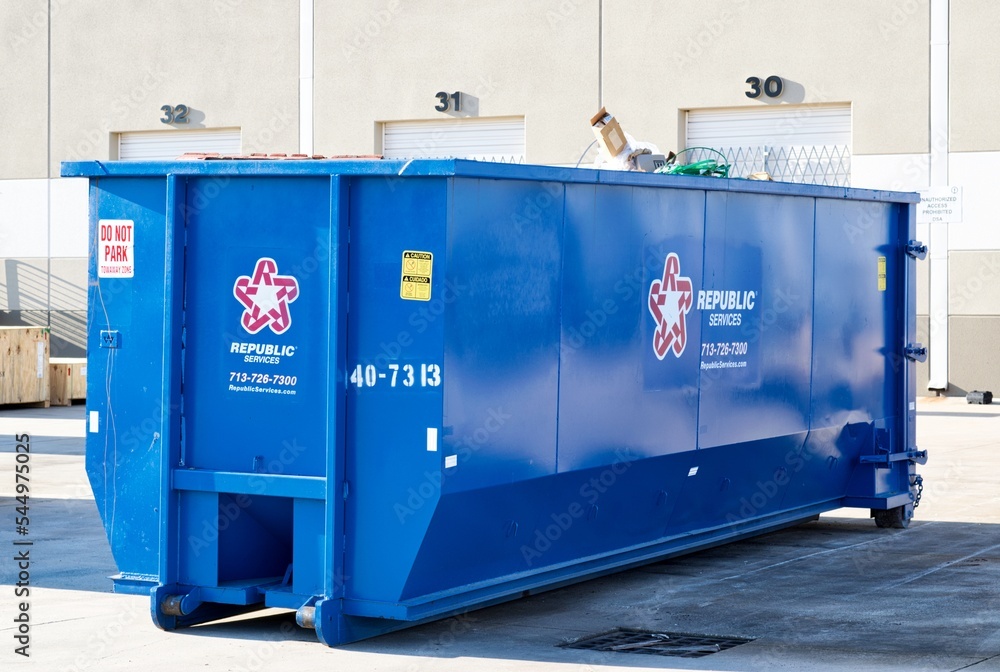Renting a dumpster can be a straightforward procedure when you adhere to the ideal actions. Establish your job's specific needs, taking into consideration variables like scope, waste kind, and logistics. After that, pick the ideal dumpster size, associating with your task's scale, and pick a rental duration that matches your timeline. It's likewise essential to recognize local regulations and debris disposal guidelines to stay clear of fines and guarantee area safety. Ultimately, evaluation and wrap up the rental agreement, validating information on period, dimension, prices, and solutions. By complying with these 5 essential steps, you'll be well on your means to reliable and effective waste monitoring-- and there's more to discover on the planet of dumpster rentals.

Determine Your Dumpster Needs
Project scope is a critical factor in identifying your dumpster needs Whether you're embarking on a home renovation, cleaning a chaotic garage, or managing a building and construction website, recognizing the range of your task will help you recognize the best dumpster rental solution

Consider the type and amount of waste you'll generate, along with any type of certain laws or constraints in your area. This info will permit you to figure out the regularity of dumpster shipments, the essential dumpster dimension, and the required leasing period.
Additionally, think of the logistics of your project, including the available area for dumpster placement, access to the website, and the number of workers or people involved.
Choose the Right Dumpster Size
With a clear understanding of your job range, you can now focus on choosing the appropriate dumpster size to fit your waste administration needs This vital action guarantees you have enough area to dispose of waste efficiently without paying too much for excess capacity.
To figure out the optimal dumpster size, take into consideration the kind and quantity of waste you'll be producing. For small-scale projects like bathroom remodels or small landscape design, a 10-15 lawn dumpster ought to suffice.
Medium-sized projects, such as kitchen area renovations or multi-room cleanouts, normally need 20-30 backyard dumpsters. Larger projects, like building and construction or demolition, commonly demand 30-40 lawn dumpsters.
Remember to likewise consider the weight and density of the waste, as much heavier materials like concrete or asphalt might need larger dumpsters.
Be certain to talk to your dumpster rental carrier if you're unsure regarding the right size for your task. By choosing the ideal dumpster dimension, you'll enhance your waste monitoring procedure, reduce costs, and decrease ecological impact.
Select the Suitable Rental Period
Your dumpster's rental period is an essential aspect of the waste monitoring process, as it straight impacts the overall cost and performance of your project. A tactical rental period assurances you have enough time to finish your project without incurring extra fees. Alternatively, an inadequate rental period can result in costly extensions and even premature dumpster pickup.
To pick the perfect rental duration, take into consideration the range and intricacy of your task. For instance, a small cleaning may need a short-term service, while a massive building and construction job might demand a http://piedmont-triaddumpsters.lowescouponn.com/7-vital-dumpster-rental-tips much longer rental duration. Be realistic regarding the time needed to finish your job, considering elements such as climate condition, labor schedule, and material shipment schedules.
Typically, dumpster leasing periods vary from a couple of days to a number of weeks or perhaps months. Make certain you connect your project timeline and requirements to your dumpster rental provider to determine one of the most ideal rental period for your needs.

Understand Debris Disposal Rules
Debris disposal regulations, governed by local regulations and dumpster rental arrangements, play a vital duty in ensuring a smooth and certified waste administration process. Understanding these policies aids prevent confusion, penalties, and ecological hazards.
Familiarize on your own with what can and can not be positioned in the dumpster, including hazardous materials, electronics, and recyclables. Furthermore, be aware of weight and dimension restrictions to avoid overwhelming the dumpster.
Some products, such as batteries, tires, and building products, may call for special handling or different disposal. Your dumpster rental service provider can offer guidance on particular policies in your area.
It's crucial to adhere to these guidelines to keep a tidy and risk-free atmosphere for your neighborhood. By doing so, you'll avoid prospective liabilities and ensure a successful waste monitoring project
Review and Settle the Rental
Having validated compliance with regional laws and recognized what can and can not be dealt with in the dumpster, the next action is to examine and wrap up the rental agreement
This vital action guarantees a smooth rental experience and avoids potential problems during the dumpster rental period.
Carefully assess the contract to verify the rental duration, dumpster size, and pricing.
Verify that the arrangement includes any additional services, such as shipment, pick-up, and disposal fees.
Also, check if there are any type of weight or material restrictions that might incur extra charges.
Make specific to comprehend the payment terms, including the method of payment and any prospective late fees.
Once completely satisfied with the contract, indication and return a duplicate to the dumpster rental company to finalize the rental.